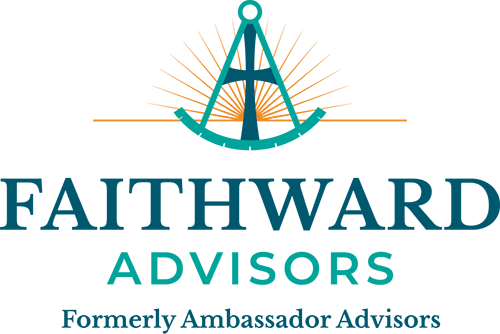-

-
275 Hess Boulevard
Directions
Lancaster, PA 17601 -
Call
717.560.8300 -
Fax
717.833.6303
- contact us
Financial Services


Fulfilling our Biblical call to generosity may be accomplished through a myriad of avenues. Often, Christians are called to fill an immediate or spontaneous need that arises. Others may prefer a more structured plan by giving and tithing on a consistent basis. There is no right or wrong way to give, as long as it is motivated by glorifying God and not ourselves. However, for those who have been blessed with abundance, the hope to leave a lasting legacy and the desire to increase the efficiency and impact of the dollars they are giving makes it important to plan ahead and take advantage of the various charitable planning tools that are available. Faithward Advisors’ most effective planning conversations aim to allow clients to give more money to charities, churches, and nonprofits, all while sending less money to Uncle Sam. Here are several creative tools to help accomplish this:
Charitable Remainder Unitrust (CRUT)
A CRUT can be an effective vehicle for highly appreciated assets, particularly income-generating real estate. By transferring ownership of a property into the trust, followed by selling it, several things can be accomplished. First, the donor receives a tax deduction for a portion of the value of the property, which can be carried forward an additional five years. Second, all capital gains taxes from the sale are completely bypassed. Finally, the trust pays out a tax-preferred income stream, typically for the lifetime of the donor. Any amount remaining in the trust upon the donor’s passing goes to charity, creating a lasting legacy for generations to come.
Donor Advised Fund (DAF)
A donor advised fund is an account most often funded with cash or appreciated stock. Similar to a CRUT, it also bypasses any capital gains tax, and results in an income tax deduction. The major difference here is that the entire gift is tax-deductible, and distributions must go to nonprofits. The contributions can be invested and continue to grow, allowing for even larger charitable gifts over time. If a donor is receiving the standard deduction on personal income taxes, it is likely that individual may not be receiving any tax benefit from annual giving. In this case, it may make sense to consider a strategy called “charitable clumping.” This is achieved by front-loading several years of giving into a DAF and itemizing taxes that year to take full advantage of the write-off. In the following years, the donor continues the same level of giving (however, the giving is from the DAF), and they may return to electing the standard deduction on taxes. A DAF can also be a great way to establish a multi-generational charitable vehicle, allowing children and grandchildren to continue stewarding the fund into the future.
Qualified Charitable Distributions (QCDs)
QCDs are important to understand for anyone subject to required minimum distributions (RMDs) from a pre-tax IRA. These RMDs must be satisfied each year, and are counted as taxable income, which can have significant consequences if they push an individual into higher tax brackets A higher income can also negatively impact the taxability of social security, and increase Medicare premiums. To negate this, the IRA custodian can send all, or part, of the RMD amount directly to a qualified charity, which results in the income being non-taxable. QCDs can be utilized by any individual over 70.5, even though RMDs don’t begin until 72. With an annual cap of $100k, the flexibility is available, in most situations, to do all annual giving through this method.
Beneficiary Elections
Many people don’t realize that the beneficiary listed on an account takes precedence over a Last Will and Testament. It’s important to consider this, and understand the tax consequences of various assets, if a donor intends to bless any charities upon his/her passing. The least effective accounts, from a tax standpoint, to pass on to family are pre-tax retirement accounts, since they are subject to both federal income tax and state inheritance tax (in some states). Because of this, instead of listing charities in a Will, name charities as the beneficiary on Traditional IRAs and 401(k)s. This way, family can receive more tax-favorable assets, such as real estate, stocks, and life insurance (life insurance being the only asset that can be inherited by an individual completely tax-free, regardless of the state in which you live).
These are just a few examples of the strategies Faithward Advisors can implement in a client’s plan. Matching the right tool with the right situation is imperative, since there is no one-size-fits-all approach to financial planning. If you have been considering an increase in the intentionality of your charitable giving, we would be happy to discuss these strategies as we assist in your planning.
Securities offered through American Portfolios Financial Services, Inc. of Holbrook, New York, 631.439.4600,(APFS), member FINRA, SIPC. Faithward Advisors is not owned or operated by APFS. Faithward Advisors offers Investment Advisory services through Ambassador Advisors, an SEC Registered Investment Advisor. Dream More, Plan More, Do More is a registered trademark of Faithward Advisors, LLC, Reg. U.S. Pat. & Tm. Off.